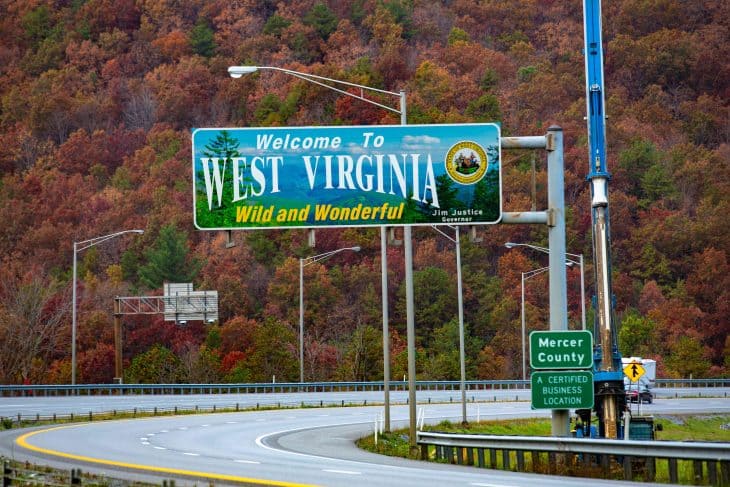
West Virginia is an ideal place if you are looking for a lower cost of living (about 5.6% below the national average in general). An average home here is more than 30% below the national average. The state is not only famous for its breathtaking outdoor activities, such as mountaineering, water rafting, and more, but it also has an undeniably rich history. Though debatable, the Mountain State state once housed the largest 500-year-old Sycamore Tree. And in it, you can also find the oldest and largest Native American Burial grounds. Ultimately, if you are looking for a place that will inspire your artistic side for photography, painting, and literature, then West Virginia is one of the best places to be. That’s why we have here 50 West Virginia facts for you to learn more about this lovely state.
- West Virginia is the 41st-largest state by area in the United States.
- Charleston is West Virginia’s capital and biggest city.
- West Virginia’s nickname is the “Mountain State.
- The state is located in the Appalachian, Mid-Atlantic, and Southeastern regions.
- West Virginia became the 35th state of the United States on June 20, 1863.
- This state shares its borders with Pennsylvania, Maryland, Kentucky, Ohio, and Virginia.
- As of 2021, West Virginia’s population is around 1.8 million.
- It officially became a state after the Wheeling Conventions of 1861.
- West Virginia’s land area is around 62,361 sq km. If we compare it to Germany, West Virginia is almost 18% of Germany’s size.
- West Virginia has more than 30 watersheds. These watersheds flow to the Chesapeake Bay and the Gulf of Mexico.
- The average median household income in the state is $43,469.
- West Virginians is the term for the people who live in West Virginia.
- The state’s USPS abbreviation is WV.
- West Virginia has 55 counties.
- The official website of West Virginia is wv.gov.
- West Virginia was a key border state during the American Civil War.
- During the early 1800s, slavery and the slave trade were legal in West Virginia, and some of its residents held slaves.
- The gradual abolition of slavery started in the mid-1800s and finally stopped on February 3, 1865.
- Spanish is the 2nd most spoken language in West Virginia after English.
- At least 75% of West Virginians are Christians.
Was this page helpful?
Our commitment to delivering trustworthy and engaging content is at the heart of what we do. Each fact on our site is contributed by real users like you, bringing a wealth of diverse insights and information. To ensure the highest standards of accuracy and reliability, our dedicated editors meticulously review each submission. This process guarantees that the facts we share are not only fascinating but also credible. Trust in our commitment to quality and authenticity as you explore and learn with us.
